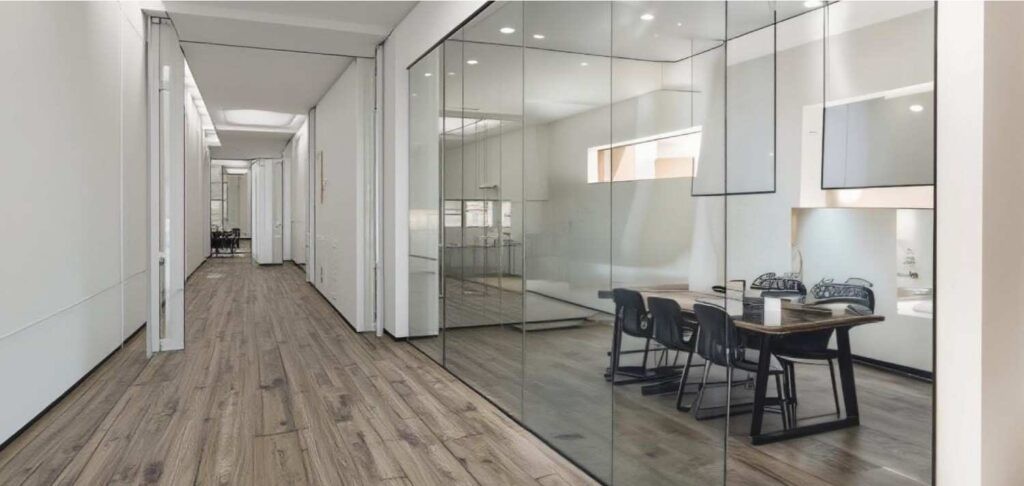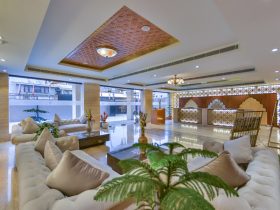Glass partitions are now a common feature in modern offices. These structures allow natural light to move across spaces. A sense of openness is created without removing privacy. Every detail of a partition design can influence style and function. Framed and frameless options are both popular choices. Each style offers unique benefits that suit different interiors. Selecting the right option can improve appearance and work experience.
Understanding Framed Glass Partitions
Framed glass partitions include clear edges supported by strong metal outlines. These frames give a structured look to work environments. A framed option creates visible boundaries between zones. The design helps spaces look neat and organized. Frames also make panels strong and long lasting. Offices with high traffic often select framed styles for safety. The frames hold the glass firmly and reduce risks of damage. This type is practical for places that require daily durability.
Exploring Frameless Glass Partitions
Frameless glass partitions deliver a clean and sleek effect. The absence of visible lines allows smooth visual flow. An office with frameless panels appears more open and airy. This look suits creative spaces that prefer light and minimalism. Designers use frameless panels to maximize brightness in enclosed areas. The style fits well with modern and progressive work cultures. Frameless partitions make interiors look elegant and refined. These partitions also reduce clutter and highlight furniture and décor.
Visual Differences and Style Choices
Framed partitions highlight structure while frameless partitions highlight openness. A framed style shows clear lines that outline spaces. This look fits traditional office layouts that need order. Frameless panels on the other hand create continuous visual harmony. The absence of metal lines allows uninterrupted sight across zones. Frameless designs bring a sense of freedom in a workplace. Each design tells a story about company culture and brand. The choice reflects whether structure or creativity is valued.
Functional Impact of Each Style
The framed option is more resilient in heavy use conditions. It offers strength and security in demanding office setups. Frames allow easy installation of doors and handles. They also support thicker panels that block some sound. This option suits busy floors where structure is essential. Frameless partitions offer flexibility for light and design goals. They work best in areas where style matters most. A workplace that values open collaboration benefits from frameless glass. Both options improve use of natural light in different ways.
Practical Considerations for Offices
Cost plays a major role in selection. Framed partitions are often more affordable to install. Frameless styles usually cost more because of custom fittings. Maintenance also differs between the two styles. Frames can collect dust and need regular cleaning. Frameless panels are easier to wipe and maintain. Privacy is another point of concern for workplaces. A partition for glass office can include frosted or tinted panels. These finishes work well in either framed or frameless design. Offices must also think about future changes and flexibility. Frameless options allow reconfiguration without visible marks left behind. Framed structures are harder to shift once installed.
Conclusion
Framed and frameless partitions both enhance modern workplaces. The decision depends on function style and budget. Framed options provide safety durability and structure. Frameless designs deliver elegance openness and light. Each choice shapes the mood of a workspace. Careful selection ensures the office looks professional and feels comfortable.










